By Christopher Miskimon
The men of Baker Company of the 1st Battalion, 5th Marines endured a freezing truck ride to Yudam-Ni, near the soon to be infamous Chosin Reservoir, on November 27, 1950. They arrived at 9:00 pm to discover the advanced party had set up only one tent per platoon in their assigned bivouac area. The tired Marines unrolled cold sleeping bags and warmed them the only way they could—by crawling into them. Some were hungry enough to eat a frozen can of meat and beans before dozing off. Their sleep proved short-lived, though: from the nearby perimeter soon came a crack of rifle fire and the crump of hand grenades. The Chinese were attacking, and they were awfully close.
Many of the Marines of the company, which had the nickname the Baker Bandits, grew restless in their sleeping bags. Their commander, Lieutenant John Hancock, noted his men did not like bullets cracking overhead when they could not do anything to fight back. It was easier for most of them to be in the line rather than behind it. In the line, they would ignore the sort of near misses that now bothered them. Orders soon came from above: Baker would remain in reserve under the battalion commander, Colonel John Stevens. The company stayed where it was, frustrated and edgy.
The Chinese began to overrun the perimeter. Several platoons from A Company went up to reinforce it. Soon Charlie Company sent men up as well, many of them laden with extra ammunition to keep the Marines on the perimeter firing. Mortar fire landed around them, but Baker remained in reserve. If the Colonel committed them, everyone would know the situation was dire. All Hancock’s men were out of their bags, ready to move at a moment’s notice. They knew they were the last card the battalion had to play. When the dawn sun rose, the perimeter still held, though the Chinese refused to retreat, staying within grenade range of the Marines on the hilltops.
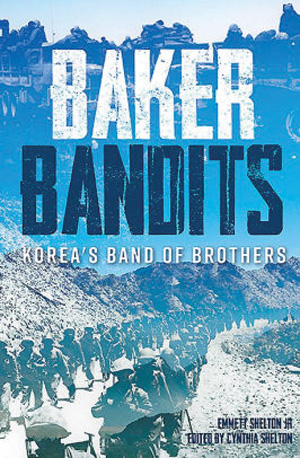 Now, in full daylight, Baker is ordered to relieve another company on the perimeter, a mile away. Some of the Marines express dismay: how do you relieve a company on a perimeter in full daylight? They always carried out such moves under cover of darkness. Hancock’s account of the day ends there. Before he could add to his journal, he was killed. Another officer, Lieutenant Bud Kohler, recalled occupying their new position under fire. The marines immediately called in airstrikes on nearby enemy concentrations, which seemed to quiet things down for a time.
Now, in full daylight, Baker is ordered to relieve another company on the perimeter, a mile away. Some of the Marines express dismay: how do you relieve a company on a perimeter in full daylight? They always carried out such moves under cover of darkness. Hancock’s account of the day ends there. Before he could add to his journal, he was killed. Another officer, Lieutenant Bud Kohler, recalled occupying their new position under fire. The marines immediately called in airstrikes on nearby enemy concentrations, which seemed to quiet things down for a time.
The next day, they plastered another enemy-held hill with airstrikes and artillery before First Platoon leader Lieutenant Austin “Swede” Jensen led his men up the hill in an attack. Jensen stayed in the front, firing from the hip and throwing grenades. As Kohler watched from the perimeter, Jensen reached the top of the hill with eight Marines. Suddenly a hail of grenades landed on the First Platoon men, knocking them all down. The Chinese enveloped the attacking men, killing two more of them. Kohler recalled they were unable to even recover the bodies of the dead. They never did take the hill back. Later in the day Kohler learned there were at least four Chinese divisions attacking them, and two more divisions attempting to outflank them and cut them off.
The Marines of Baker Company were in for a horrible ordeal at Chosin, but it was not their first or last battle in Korea. They had already fought at Pusan, Naktong, and Inchon, and would go on to fight at numerous other places after they took part in the fighting withdrawal from Chosin to evacuation at Hungnam. Their experiences are covered in Baker Bandits: Korea’s Band of Brothers (Emmet Shelton, Jr., edited by Cynthia Shelton, Casemate Publishing, Havertown PA, 2020, 350 pp., maps, photographs, appendices, index, $34.95, hardcover).
The author’s father was a Baker Bandit and gathered the experiences of the Marines in the company, many of them published in the unit’s postwar newsletter to its veterans. Rather than create a standard narrative from these sources, the author organized them logically and chronologically and left each account in its original form—the veteran’s own words.
The accounts include writings by officers, noncommissioned officers, and enlisted men, all of whom shared the terrible experiences of the Korean War together. This method of organizing the book is unusual, but it works well here, with a natural flow to the narrative due to careful editing and ordering. The veterans of the Korean War are almost all gone now. While their war was smaller in scope, their actions and service deserve to be remembered.
 The Long Shadow of Waterloo: Myths, Memories and Debates (Timothy Fitzpatrick, Casemate Publishers, Havertown PA, 2021, 256 pp., photographs, notes, bibliography, index, $44.95, hardcover)
The Long Shadow of Waterloo: Myths, Memories and Debates (Timothy Fitzpatrick, Casemate Publishers, Havertown PA, 2021, 256 pp., photographs, notes, bibliography, index, $44.95, hardcover)
Waterloo ranks as one of the pivotal battles of European history, putting paid to Napoleon’s ambitions and setting the stage for the continent’s next century. Different nations attached varying meaning to the battle’s significance, however, as did the participants. The victorious Duke of Wellington portrayed it as a British victory over great odds against a vastly more numerous foe. Napoleon blamed his subordinates for failing to carry out his genius, particularly Marshal Grouchy, who spent decades telling the world Napoleon’s account was false, written to cover his own mistakes. Great Britain used their triumph as a symbol of Imperial might, downplaying the contributions of their allies. For France, it was nothing short of a complete disaster. Throughout Europe, the memory of Waterloo served political and personal needs.
Rather than a simple retelling of the battle, this new work explores its effect on the minds and memories of those involved. The authors gathered information on how Waterloo was remembered politically, culturally, through literature and even tourism. The battle figured prominently in the 19th-Century mind, and the book effectively presents how that hold on the imagination was used and even exploited.
 Lawrence of Arabia on War: The Campaign in the Desert 1916-18 (Rob Johnson, Osprey Publishing, Oxford UK, 2021, 368 pp., maps, photographs, notes, bibliography, index, $35.00, hardcover)
Lawrence of Arabia on War: The Campaign in the Desert 1916-18 (Rob Johnson, Osprey Publishing, Oxford UK, 2021, 368 pp., maps, photographs, notes, bibliography, index, $35.00, hardcover)
Colonel Thomas Edward Lawrence, famous as “Lawrence of Arabia,” was an eccentric and unconventional British officer. As such, he had unusual ideas about warfare and how to conduct it. Unusual, however, does not mean ludicrous or ineffective. He developed concepts on guerrilla fighting and tactical theory which are still studied closely a century later. Lawrence began his education on the subject at university but perfected it in the harsh cauldron of combat in the Middle East during World War I. He possessed the ability to achieve victory even when outnumbered by a better-equipped enemy. His experience in the desert both before and during the war allowed him to conceive how best to conduct irregular warfare in such a sparse and unforgiving environment. Most of the war was viewed by the public as industrialized and impersonal slaughter. Lawrence emerged as a romantic hero, achieving success in an exotic locale against long odds.
This examination of Lawrence and his operations exposes his knowledge of strategy and politics in the context of the Middle Eastern Theater. The author traces how his subject’s ideas evolved over time into a usable method of fighting the Ottomans in conjunction with the Allied Armies active in Palestine. The book also presents studies on how Lawrence is studied by modern soldiers conducting counter-insurgency campaigns around the world.
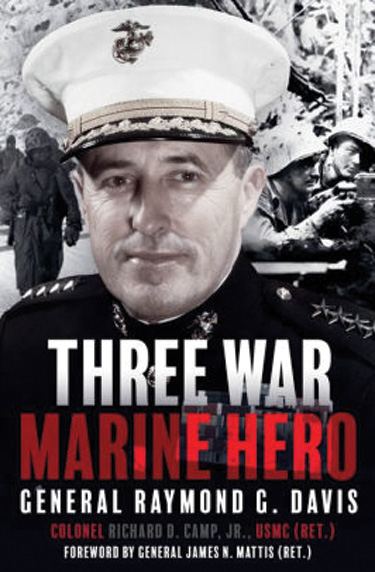 Three War Marine Hero: General Raymond C. Davis (Col. Richard D. Camp, Jr., USMC (Ret), Casemate Publishing, Havertown PA, 2021, 231 pp., maps, photographs, notes, bibliography, index, $34.95, hardcover)
Three War Marine Hero: General Raymond C. Davis (Col. Richard D. Camp, Jr., USMC (Ret), Casemate Publishing, Havertown PA, 2021, 231 pp., maps, photographs, notes, bibliography, index, $34.95, hardcover)
Lt. Col. Raymond Davis already had one war under his belt when he led a battalion in Korea during the frozen hell of the Chosin Reservoir. For four days in December 1950, he led his Marines to take and hold a pass that provided the only avenue of withdrawal for two regiments in danger of being cut off by attacking Chinese troops. Davis advanced at the front of his men up a steep hill under heavy fire and engaged in hand-to-hand combat to seize high ground. Afterward his Marines followed him in three more attacks on enemy-held ridgelines until they finally secured the mountain pass and relieved a rifle company that had been surrounded.
Throughout the ordeal, Davis brought his wounded with him, held the pass against enemy counterattacks, and kept his men inspired and encouraged to keep up the fight. Only after the two regiments got through did Davis lead his own men out to their embarkation area. For these four days of constant heroism, Davis was awarded the Medal of Honor. He later served in Vietnam as a general officer commanding the Third Marine Division.
Davis was truly an extraordinary Marine, and this biography reveals his equally extraordinary life. The Navy Cross and Silver Star were among his other decorations, revealing him as a man of action, though he was also a devoted husband and father. The author was Davis’ aide-de-camp during the Vietnam War and writes with a personal knowledge of his subject. The work shines a well-deserved light on Davis and his service to his country.
 Bosworth 1485: The Downfall of Richard III (Christopher Gravett, Osprey Publishing, Oxford UK, 2021, 96 pp., maps, photographs, bibliography, index, $24.00, softcover)
Bosworth 1485: The Downfall of Richard III (Christopher Gravett, Osprey Publishing, Oxford UK, 2021, 96 pp., maps, photographs, bibliography, index, $24.00, softcover)
The Battle of Bosworth is one of the most important military engagements in British history, the culminating battle of the Wars of the Roses. Yorkist King Richard III went into battle against the forces of Lancastrian Henry Tudor, but he did not survive. His death altered the course of English history. Originally buried on church ground, Richard’s body was discovered in 2012 beneath a modern parking lot.
The author wrote the original account of this battle for the publisher in 1999, but so much new information has arisen, including the discovery not only of Richard’s remains but of the battle’s location, a new edition was warranted. This newly released work is updated with the latest historical research and archaeological information. The book thoroughly covers origins of the campaign, the phases of the battle, and its consequences. It is well-illustrated, includng several original pieces of art created just for the book.
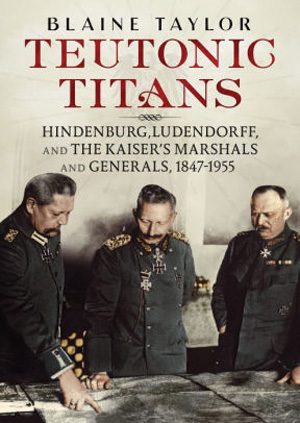 Teutonic Titans: Hindenburg, Ludendorff and the Kaiser’s Marshals and Generals 1847 – 1955 (Blaine Taylor, Fonthill Press, South Yorkshire UK, 2021, 413 pp., maps, photographs, bibliography, $55.00, hardcover)
Teutonic Titans: Hindenburg, Ludendorff and the Kaiser’s Marshals and Generals 1847 – 1955 (Blaine Taylor, Fonthill Press, South Yorkshire UK, 2021, 413 pp., maps, photographs, bibliography, $55.00, hardcover)
Kaiser Wilhelm’s army entered World War I with a range of marshals, generals and senior officers who satisfied every stereotype of the aristocratic Prussian officer. Men such as Field Marshal August von Mackensen, who was a talented, vigorous, and resourceful general, did indeed come from the aristocracy. A few commoners, such as Erich Ludendorff, also rose to high positions through competence and skill. There were also men mostly unknown today, such as Georg von der Marwitz, the leader of Prussian Horse, who began the war leading a cavalry corps but later commanded armies on both fronts. There were two generals named Von Below. The first, Otto Von Below, co-commanded the armies that achieved victory at the Battle of Caporetto in 1917. The other, named Fritz Von Below, began the war in the east but later commanded troops on the Western Front, including at the Somme, where he won his second award of the Blue Max.
The stories of these officers, those of many of their colleagues, and the men they fought are all covered in this new work. The book also contains vast information on the weapons, tactics, and units of the period. Best of all, the volume contains more than 500 images of these men and the lives they led. The author excels at producing well-illustrated essay books such as this and has several others to his credit. While a number of the subjects of this book later sided with the Nazis, the work presents a picture of Germany’s military leadership before the nation’s descent into fascism.
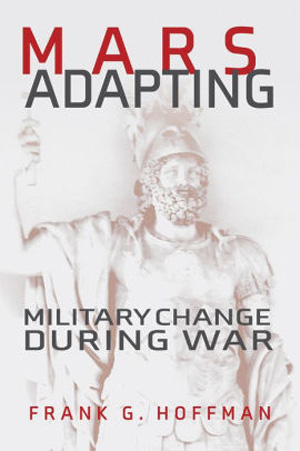 Mars Adapting: Military Change During War (Frank G. Hoffman, Naval Institute Press, Annapolis MD, 2021, 350 pp., maps, illustrations, notes, bibliography, index, $39.95, hardcover)
Mars Adapting: Military Change During War (Frank G. Hoffman, Naval Institute Press, Annapolis MD, 2021, 350 pp., maps, illustrations, notes, bibliography, index, $39.95, hardcover)
When a soldier in Iraq asked U.S. Defense Secretary Donald Rumsfeld why his unit lacked needed equipment, Rumsfeld had a quick answer. “You go to war with the army you have,” he said. While the comment earned criticism for its insensitivity, he was correct in a literal sense. Militaries enter a conflict with the equipment, weapons, training, and doctrines they believe are, or have been, effective. Times and circumstances change, however, and during war they can change brutally fast. As a result, those same militaries usually end the conflict with forces vastly different in organization, armament, and operational capability.
This new book reveals how the United States military adapted to new and changing conditions during four conflicts, including how the United States conducted its submarine offensive in World War II, how airpower evolved during the Korean War, how the U.S. Army adapted to the conditions of the Vietnam War, and how the U.S. Marine Corps adapted to the fighting in Al Anbar province in Iraq. The author demonstrates how these military forces were compelled to change, and how the need to change can be difficult for the military to perceive and act upon in a timely fashion.
 Tiger in the Sea: The Ditching of Flying Tiger 923 and the Desperate Struggle for Survival (Eric Lindner, Lyons Press, Guilford CT, 2021, 304 pp., photographs, notes, $26.95, hardcover)
Tiger in the Sea: The Ditching of Flying Tiger 923 and the Desperate Struggle for Survival (Eric Lindner, Lyons Press, Guilford CT, 2021, 304 pp., photographs, notes, $26.95, hardcover)
In September 1962, a chartered plane crossed the Atlantic Ocean carrying a mixed group of civilians and military personnel on their way to Europe: an army colonel and his wife traveling from West Point, a bunch of newly graduated paratroopers just leaving airborne school, some air force personnel, and even a disabled D-Day veteran.
At night over a stormy sea, the plane developed engine trouble. Soon three of its four engines were out, and the aircraft was going down. The pilot, veteran John Murray, had to belly-land the plane at sea, with 80 passengers and crew at risk. Somehow, he got the plane down without losing anyone, but their ordeal was just beginning as they all struggled, and some failed, to survive in the frigid waters with just a few rafts and their life preservers to keep them afloat. NATO warships, including a Canadian aircraft carrier, searched for them as the world waited for news of either loss or triumph.
A story of heroism, endurance, and teamwork, the story of the flight known as Flying Tigers 923 is one of the unknown aerial dramas of the 20th century. The author’s in-depth research and follow-up on the lives of the survivors fills the narrative with the authenticity of human experience, giving the book life beyond a dry retelling of events.
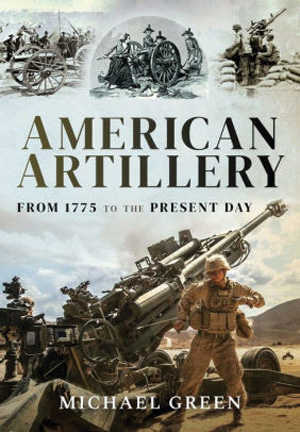 American Artillery From 1775 to the Present Day (Michael Green, Pen and Sword Publishing, South Yorkshire UK, 2021, 257 pp., photographs, bibliography, $34.95, hardcover)
American Artillery From 1775 to the Present Day (Michael Green, Pen and Sword Publishing, South Yorkshire UK, 2021, 257 pp., photographs, bibliography, $34.95, hardcover)
General George Patton was always outspoken. “I don’t have to tell you who won the war, you know our artillery did,” he said at the conclusion of World War II. The first militia unit in the continental United States was an artillery unit formed in the 1600s. From there, it was a long, gradual evolution from a few scattered batteries of cannon into the well-coordinated, hard-hitting force it became in the mid-20th Century. Gun and rocket batteries became coordinated through a sophisticated system of fire-direction centers, forward observers, and spotter planes that brought immediate, massed fire down on a target.
Since that time, U.S. artillery has become even more precise, hard-hitting, and long-ranged. In Korea and Vietnam, artillery support caused massive casualties among enemy troops. During Operation Desert Storm, American artillery proved so terrifying and effectivethat surrendering Iraqi soldiers pleaded, “No more steel rain!”
Artillery weapons and their supporting systems are the subject of this new work. It is liberally illustrated and full of technical details on cannon, rocket and missile launchers, munitions, and fire-direction equipment. There is also considerable information on how new ordnance was developed and adopted into service over time. The book is a good reference volume.
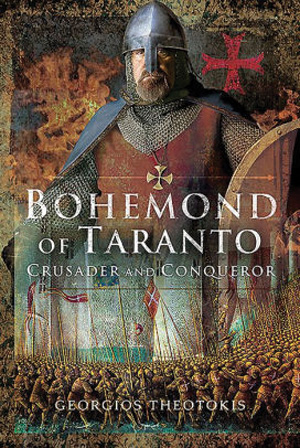 Bohemond of Taranto: Crusader and Conqueror (Georgios Theotokis, Pen and Sword Publishing, South Yorkshire UK, 2021, 196 pp., maps, photographs, notes, bibliography, index, $32.95, hardcover)
Bohemond of Taranto: Crusader and Conqueror (Georgios Theotokis, Pen and Sword Publishing, South Yorkshire UK, 2021, 196 pp., maps, photographs, notes, bibliography, index, $32.95, hardcover)
Prince Bohemond of Taranto was the Lord of Antioch and the unofficial leader of the First Crusade. He possessed enormous ambition, even trying to obtain the Byzantine throne. While that attempt failed, he succeeded in founding one of the Crusader states. He began his military career leading Norman armies in battle across Southern Europe and the Middle East, achieving military success in Italy, Sicily, the Balkans, and Anatolia. Bohemond gained a reputation as a capable leader who could see beyond tactics into the realm of strategy.
There have been few works about Bohemond in English, and this work helps bring him back into the light of historical study. The author focuses not only on Bohemond as a soldier but also as a commander and strategist, and it places him in the context of the 11th-century world. Though he’s best known for his role in the First Crusade, the book widens this focus to cover his campaigns across the Middle East and the Mediterranean. The writing is clear and easy to follow through the complexities of the medieval world.
Short Bursts
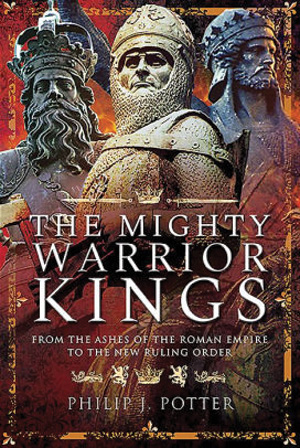 The Mighty Warrior Kings: From the Ashes of the Roman Empire to the New Ruling Order (Philip J. Potter, Pen and Sword, 2020, $34.95, hardcover) This new book profiles nine kings who ruled in post-Rome Europe. Their accomplishments and legacies are covered in detail.
The Mighty Warrior Kings: From the Ashes of the Roman Empire to the New Ruling Order (Philip J. Potter, Pen and Sword, 2020, $34.95, hardcover) This new book profiles nine kings who ruled in post-Rome Europe. Their accomplishments and legacies are covered in detail.
Armies of Celtic Europe 700 BC – AD 106: History, Organization and Equipment (Gabrielle Esposito, Pen and Sword, 2020, $34.95, hardcover) Though composed of many diverse groups, the Celt nevertheless enjoyed a distinctive culture. This work details their military forces.
Fighting for Spain: The International Brigades in the Civil War 1936-1939 (Alexander Clifford, Pen and Sword, 2020, $42.95, hardcover) The International Brigades were composed of thousands of foreign fighters attracted to the socialist cause. This book eschews their politics to discuss their performance as soldiers.
Gunship Ace: The Wars of Neal Ellis, Helicopter Pilot and Mercenary (Al J. Venter, Casemate, 2021, $24.95, softcover) Ellis served as a pilot in the South African Air Force and then went on to become a mercenary pilot, usually flying old Soviet helicopters. The author is a journalist who accompanied Ellis on some of his missions.
Winning Wars: The Enduring Nature and Changing Character of Victory from Antiquity to the 21st Century (Edited by Matthias Strohn, Casemate Publishing, 2020, $65.00, hardcover) Strategic victory can be markedly different from winning at the operational and tactical levels. This collection of essays studies different concepts of victory throughout history.
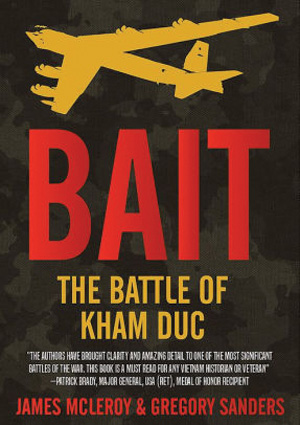 Bait: The Battle of Kham Duc (James D. McElroy and Gregory W. Sanders, Casemate, 2020, $34.95, hardcover) This attack on an isolated Special Forces camp in May 1968 is largely considered an American defeat. The authors argue the battle was successful in causing extensive North Vietnamese casualties.
Bait: The Battle of Kham Duc (James D. McElroy and Gregory W. Sanders, Casemate, 2020, $34.95, hardcover) This attack on an isolated Special Forces camp in May 1968 is largely considered an American defeat. The authors argue the battle was successful in causing extensive North Vietnamese casualties.
Forging the Trident: Theodore Roosevelt and the United States Navy (Edited by John Hattendorf and William Leeman, Naval Institute Press, 2021, $48.00, hardcover) Theodore Roosevelt is famous for being a soldier and U.S. president, but he also served as an assistant secretary of the navy. This book highlights his work to modernize and expand U.S. naval forces.
Elizabeth’s Sea Dogs and their War Against Spain (Brian Best, Frontline Books, 2021, $34.95, hardcover) English privateers waged an undeclared war against Spanish merchantmen during the reign of Queen Elizabeth. Their success helped make England a wealthy nation.
US Soldier Versus British Soldier: War of 1812 (Gregg Adams, Osprey Publishing, 2021, $22.00, softcover) American and British regular troops fought several battles during the war. Three of these engagements are covered, along with details of each side’s training, weapons, and equipment.
Leading the Roman Army: Soldiers and Emperors 31 BC – AD 235 (Jonathan Eaton, Pen and Sword Publishing, 2021, $34.95, hardcover) The Roman Empire depended on its military to control its citizens and conduct foreign wars. This new work presents ways in which the emperors kept their soldiers loyal over the course of centuries.
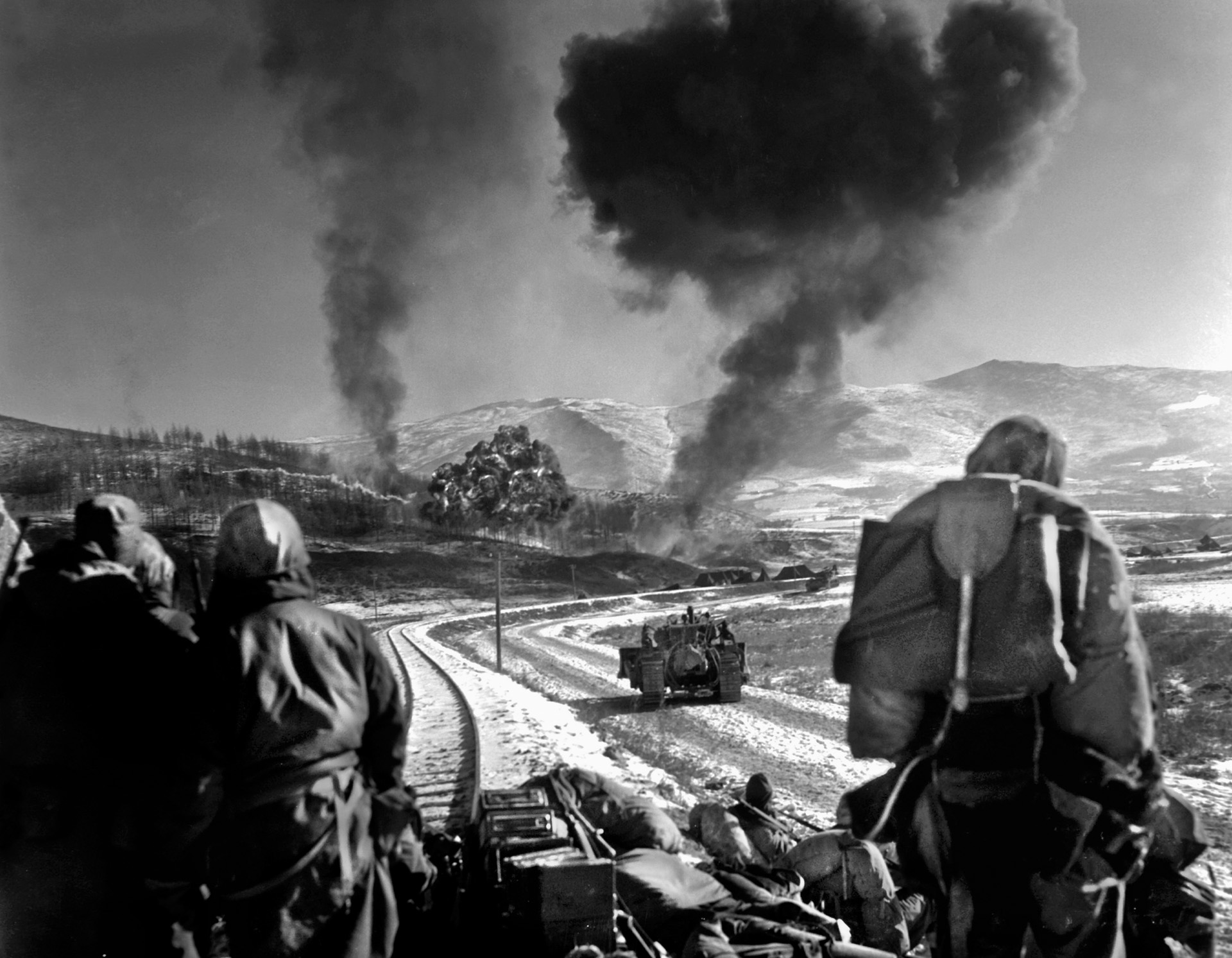
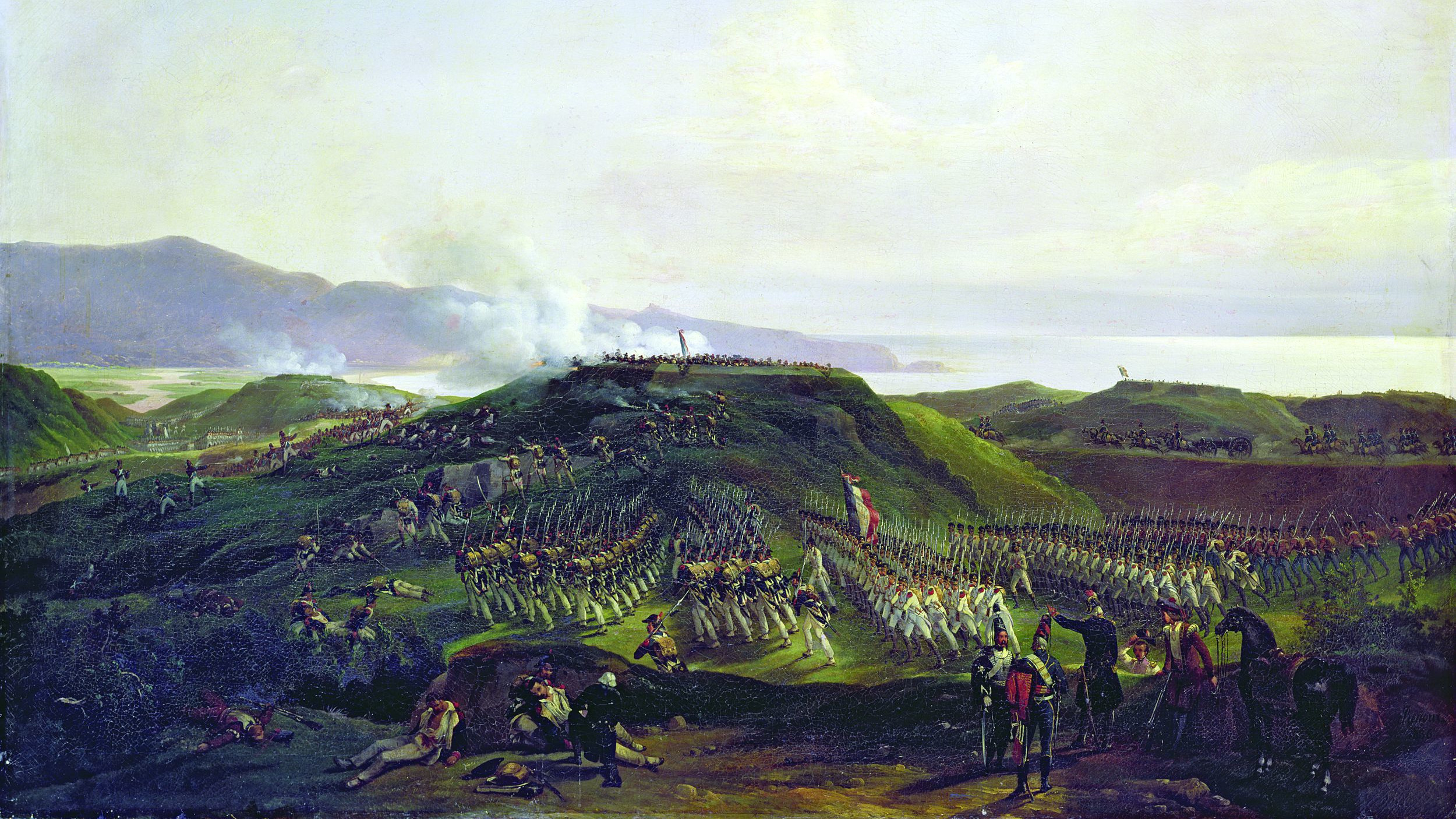
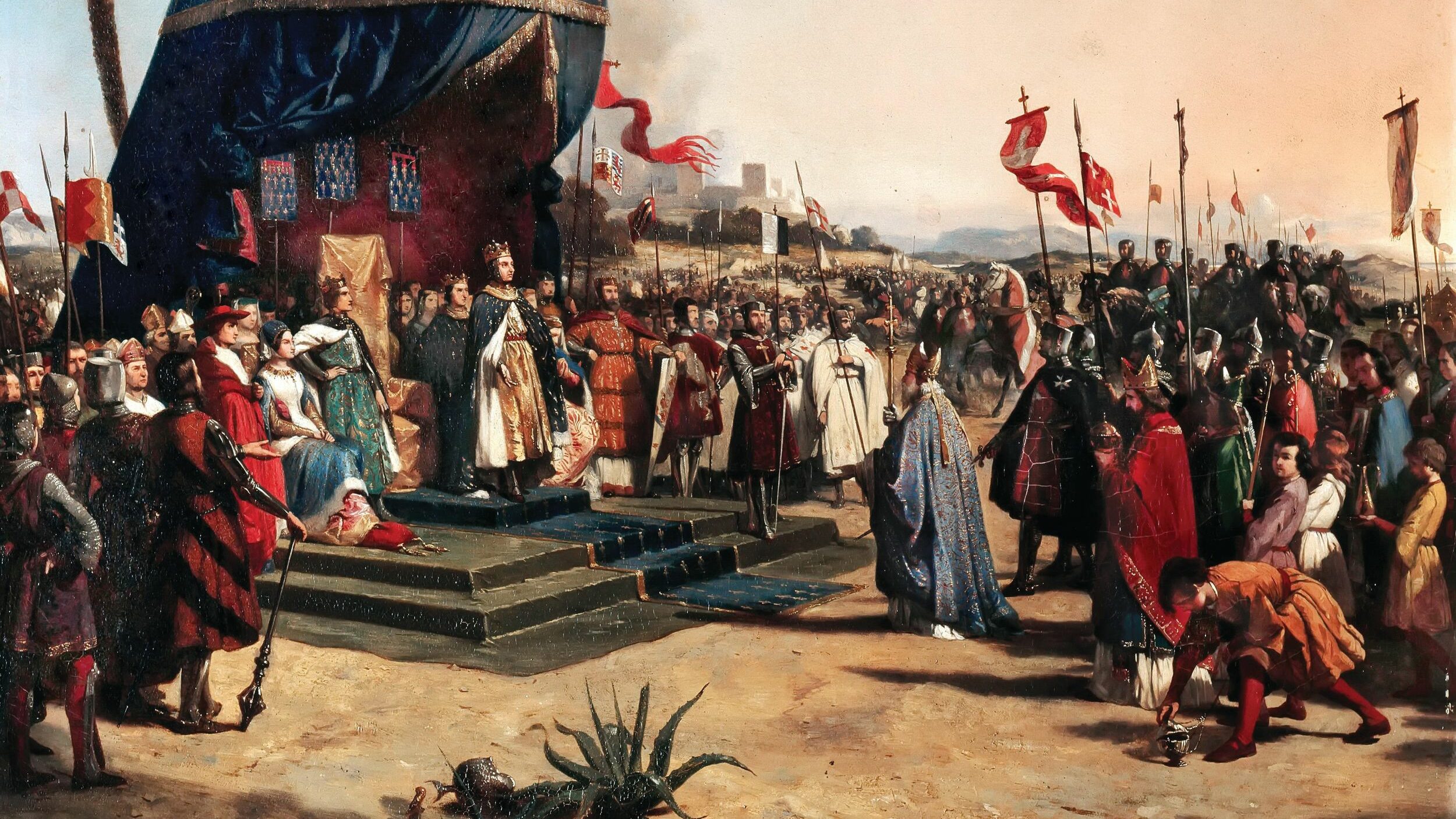
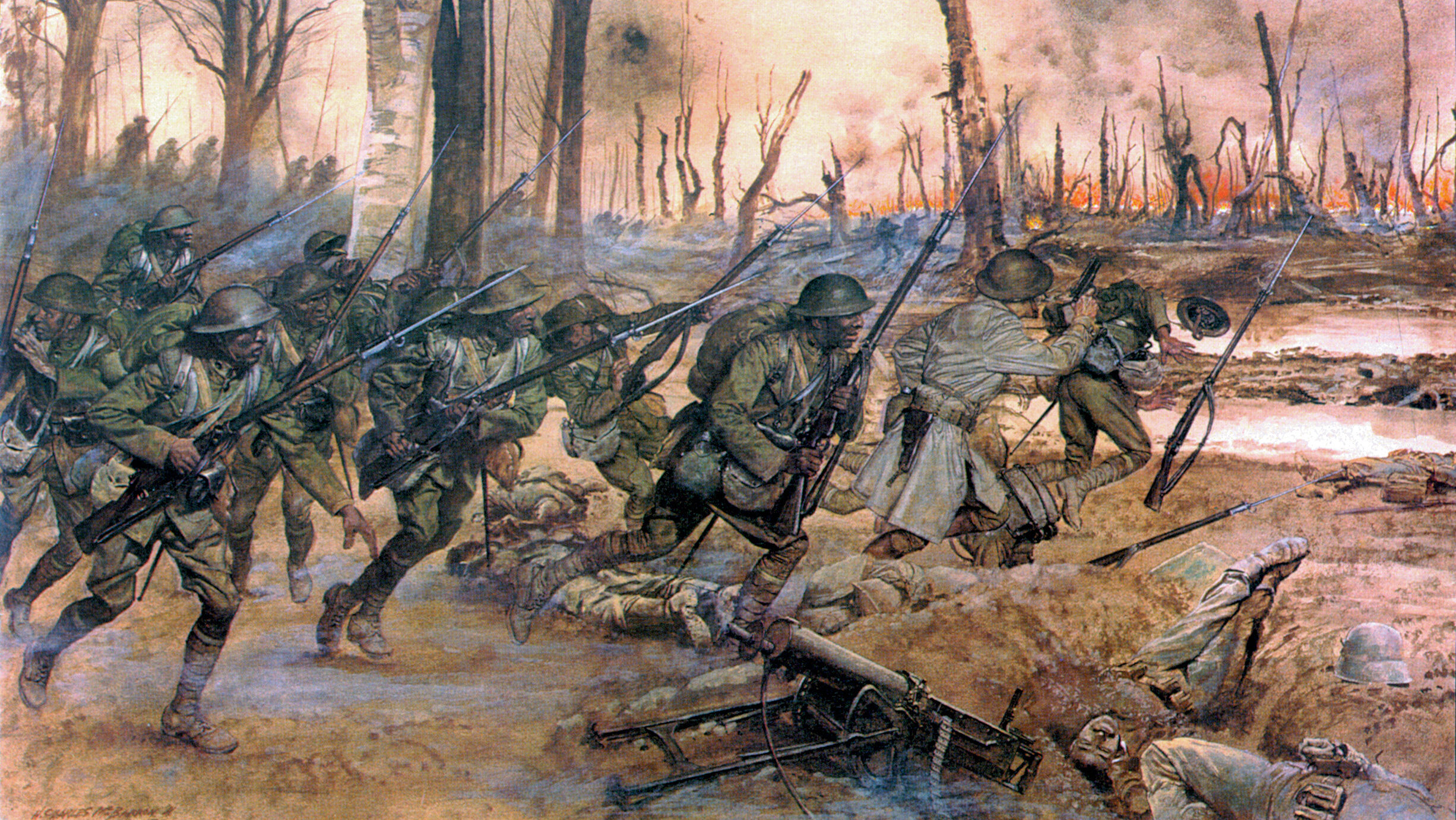
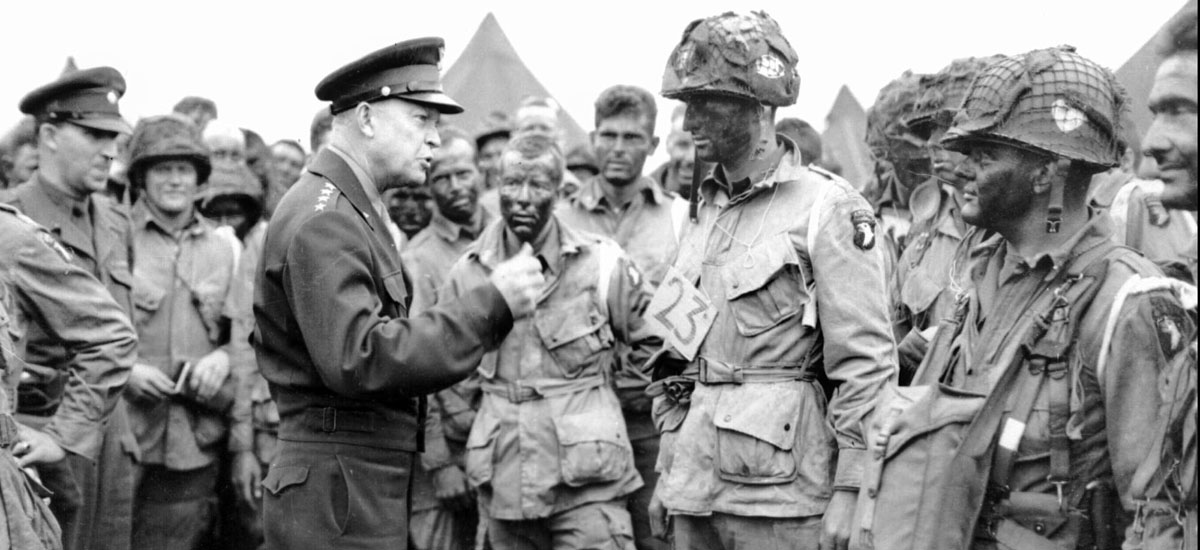

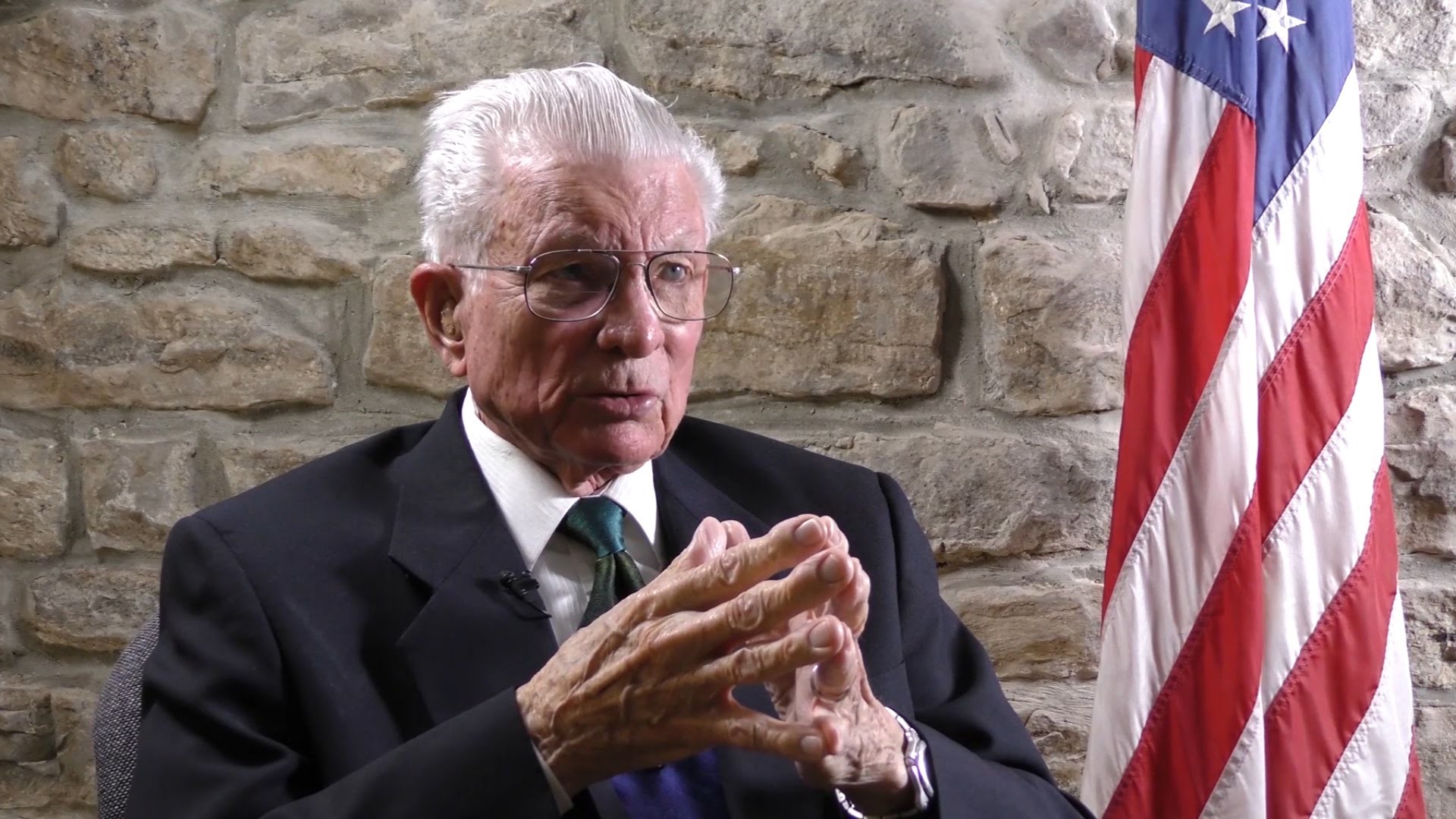
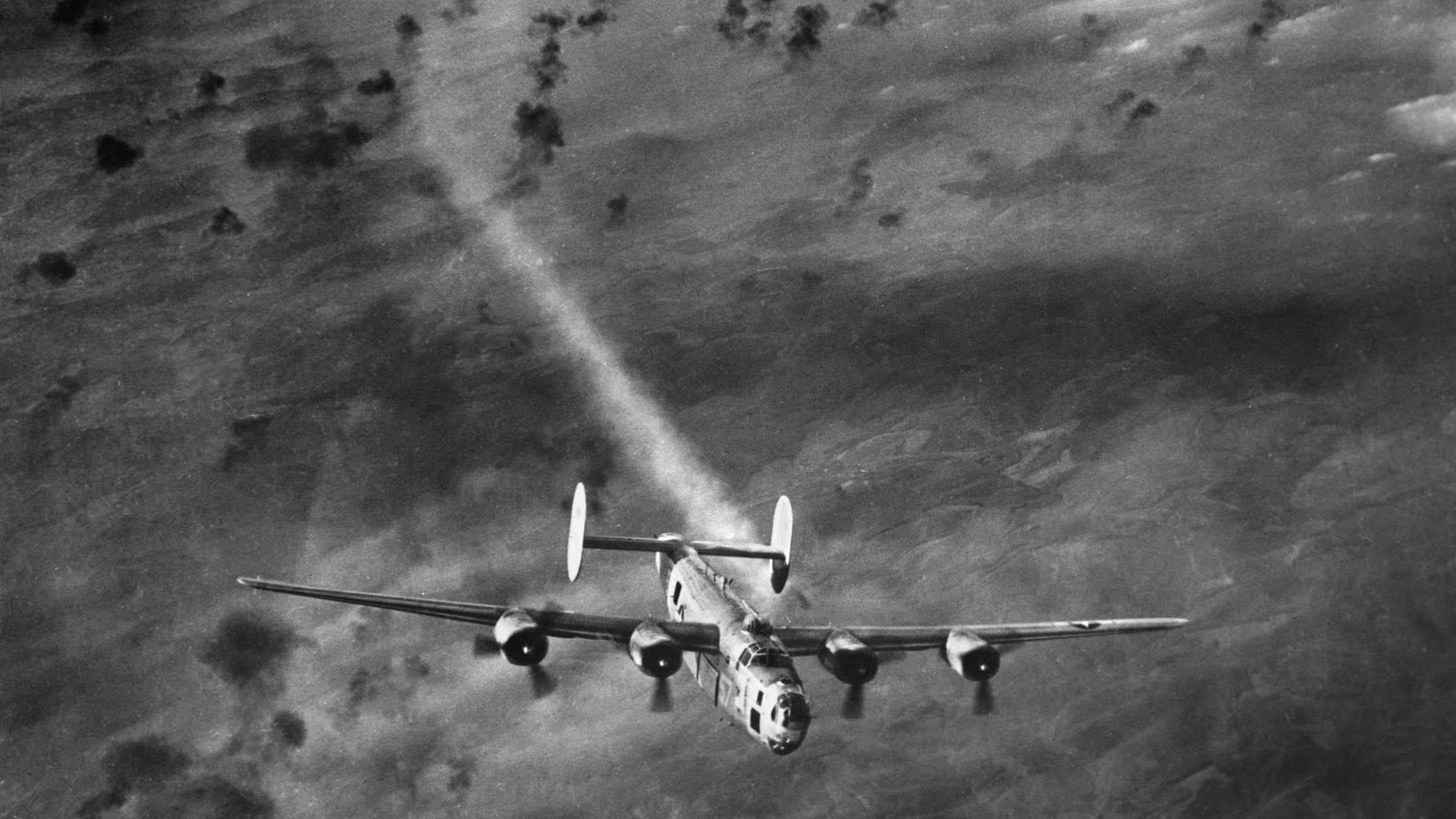
Join The Conversation
Comments
View All Comments